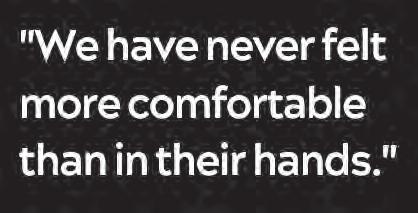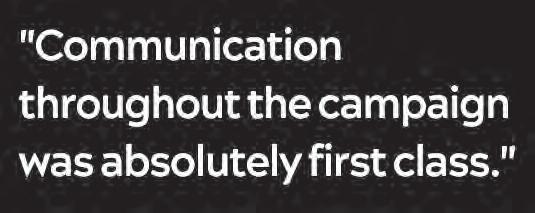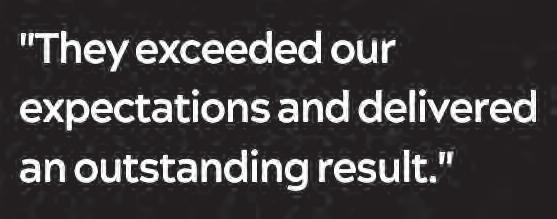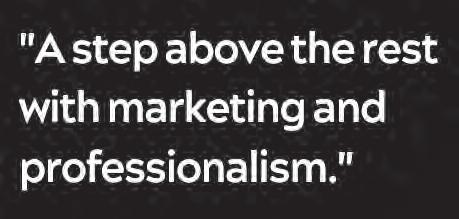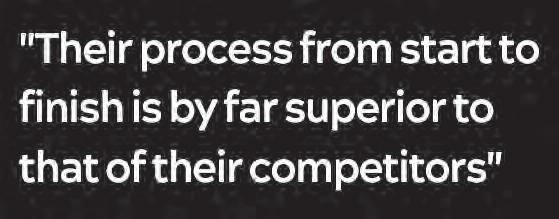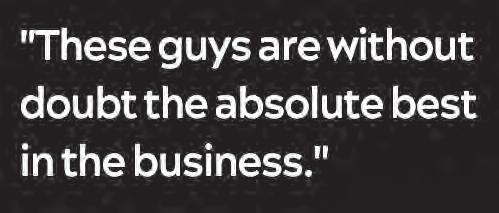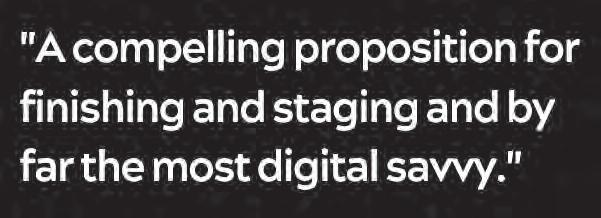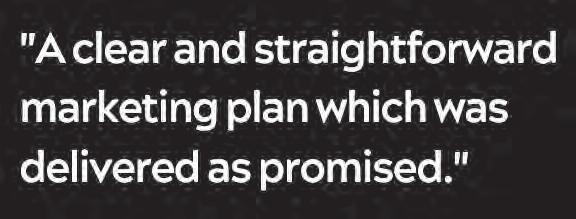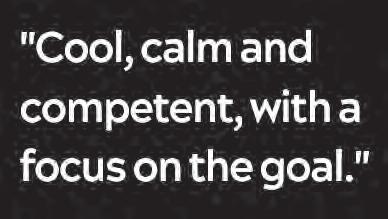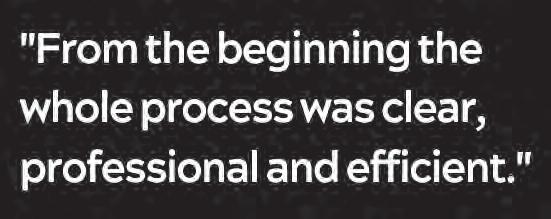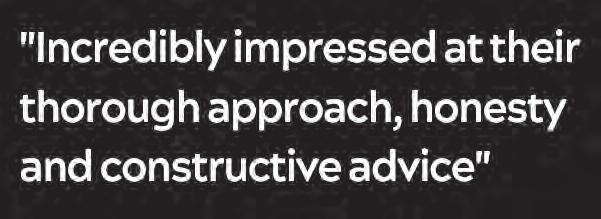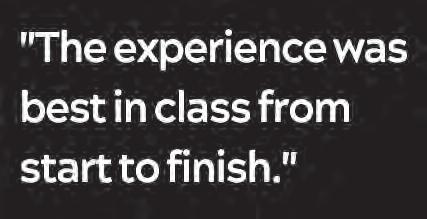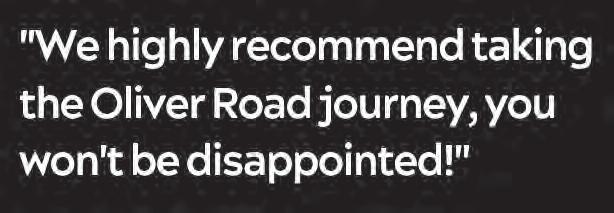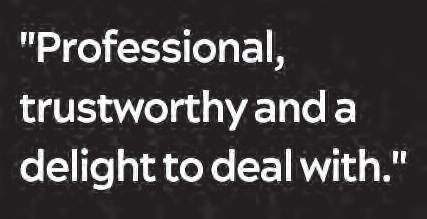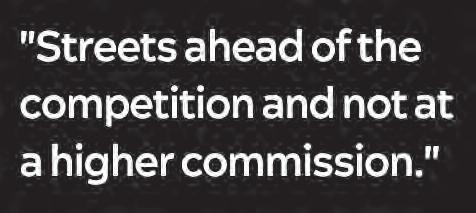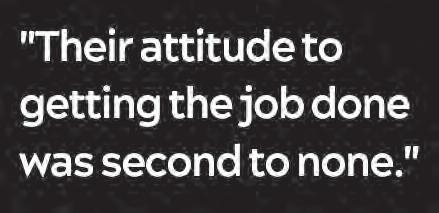
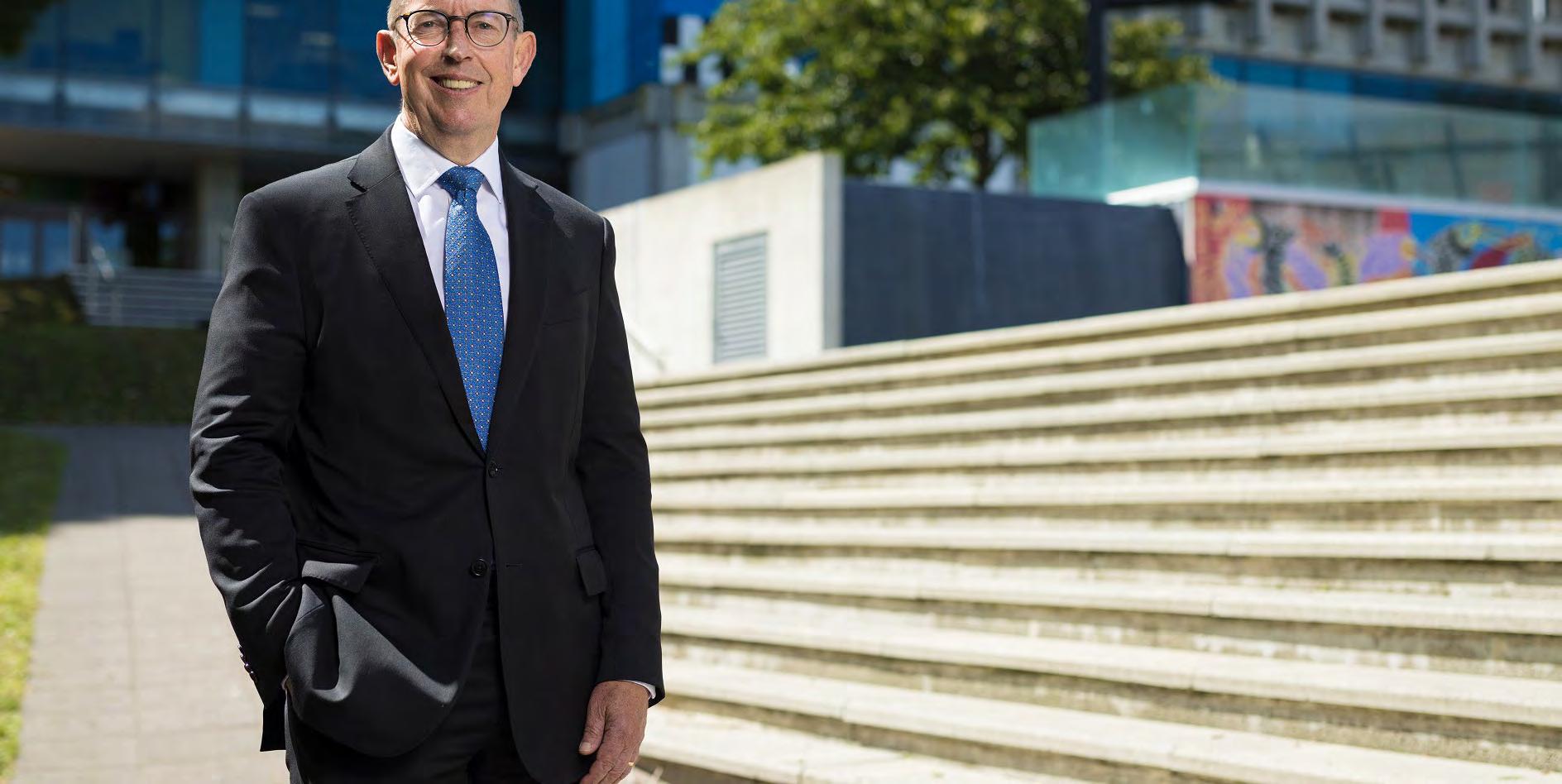



The University of Waikato has been recognised as number one in New Zealand for research citations in the annual 2023 QS World University Rankings. The University has also bucked the national trend and has risen significantly up the rankings to 331 – a rise of 42 places.
The rise is largely driven by the score for “citations per faculty member”, which measures the research intensity, impact and influence of the University’s academic staff. The placement at the top in New Zealand for citations per faculty member is an excellent result for one of the youngest universities in the country.
University of Waikato Vice-Chancellor, Professor Neil Quigley, said he was proud of all the staff of the University in achieving such an outstanding level of research productivity, and that the excellent and innovative research being undertaken at the University has been recognised on the world’s stage.
“There is no doubt that the last two years have presented all universities with unprecedented challenges, and while we are one of the smallest and youngest universities in the country, we are second to none when it comes to quality, innovation, and collaboration in research.”
“We are ranked with the best universities in the world. The fact that we have experienced a substantial rise in the rankings during such a difficult and an increasingly competitive environment is a great achievement.”
Quigley said the rise in ranking is a win for both the University and the Waikato and Bay of Plenty regions as the University’s brand is further enhanced internationally.
“It shows prospective students both here and overseas that when they study and undertake research at the University of Waikato they are supported by some of the most respected academics in the world.”
By DAVID PORTER
Tauranga City Council (TCC) has announced that its new headquarters at 90 Devonport Road could be the largest mass timber office building in New Zealand and will target a net zero carbon footprint for the building’s construction process.
Construction of the building is expected to commence in late-2022

and be completed before the end of 2024. The TCC has confirmed the leased building would accommodate all council administration staff under one roof.
Demolition of the TCC’s former main building at 95 Willow Street began recently and it is understood the site is being cleared to make way for a new civic precinct.
Built in 1989, Willow Street has housed the council’s mayoral
and executive offices, chambers, customer service centre, library, and other council services over the years. In recent years it has been plagued by problems largely caused by its age.
The new headquarters will emphasize sustainability in its construction and use. Embodied carbon is the amount of carbon emitted during building construction. The extraction of raw materials, the manufacturing





and refinement of materials, transportation, installation and disposal of old supplies can all produce embodied carbon emissions.
By minimising the use of steel and concrete, which produce carbon emissions during manufacturing, and then replacing those materials with timber that absorbs carbon from the atmosphere, the result is a neutral position on carbon emissions, said developers Willis Bond.

Engineered timber used
A property development and investment company, Willis Bond has worked alongside Warren and Mahoney architects to design the 10,000sqm building, which will use engineered timber in place of most traditional concrete and steel elements. The
Continued on page 5





Newcomer Sam Uffindell won Simon Bridges’ former seat as MP for Tauranga following the latter’s surprise resignation.
By DAVID PORTER
Uffindell won a convincing victory for the National Party with 10,931 votes (interim), recording almost double the votes of the other leading aspirant Labour’s Jan Tinetti, with the ACT Party’s Cameron Luxton coming third out of the 12 candidates, with just 1900 votes.
Bridges, who retired after 14 years in the seat, has taken up a new role as chief executive of the Auckland Chamber of Commerce.
Uffindell, a former Rabobank banker, who has served in senior roles in Australia and Singapore as well as New Zealand, said he was honoured to represent Tauranga.
“I’ve seen what world-leading societies look like and I’m hoping to bring some of those skills and that knowledge and vision to Tauranga,” he said.
He told the Bay of Plenty Business News that he had worked in banking for 14 years, leading successful high performance teams.
Uffindell said the messages he had received from people in Tauranga during his campaign had





been consistent. “We kept hearing about congestion, about crime and gang activity and about the cost of living,” he said, with the rising cost of living being a major issue especially for older people on fixed incomes.
Takitimu north reaffirmed
During the campaign Uffindell confirmed that National would go ahead with completing the Takitimu northern link to Omokoroa, which was committed to under the previous National government, but dropped by Labour when it came to power.
“We’re going to go fully up to Omokoroa,” he said.
On gangs and crime, Uffindell said he believed his background in banking and understanding the money laundering techniques currently being employed, would be of assistance when National introduced its planned legislation to curb the negative power of gangs.
“We’ll be coming down on gangs and their laundering of money across the system,” he said.
Uffindell said the proposed National legislation aimed to give police the power to remove gang convoys on the roads and enable police to issue spot fines or temporarily confiscate bikes. As to the shortfalls and rising costs in property in recent years,
he described this largely as a supply issue. “You can take a common-sense perspective and look at what is working and what is not.”
Tauranga needed to build the infrastructure around State Highway 29 to unlock housing.
“Then it’s about removing the impediments, such as the red tape and reforming the Resource Management Act, which is really holding us up in getting houses built,” he said.
“We will be ruthless focused on achieving outcomes. When I worked in banking we tried to be conservative – we only spent money when we thought we’d get the best results.”
NZTech, the lead tech industry umbrella group in Aotearoa, is pleased the government has reintroduced grants for new research and development, chief executive Graeme Muller says.
He hopes the government will be open to the types of R&D that are underpinning NZ tech’s fastest growing export sector, software.
The transition to the R&D tax incentive scheme created unexpected barriers for software and hi-tech R&D as the official tax definitions for R&D often exclude the type of research and development necessary to create successful global digital products, Muller says.
“In the tech world, companies emerge fast and often need to invest rapidly in R&D while growing a global customer base.
“These companies don’t have established R&D teams as it is everyone’s job. We really hope that these new grants will be structured in a way that helps to encourage more emerging software companies to invest in rapid R&D to accelerate their global expansion.
“The digital technologies sector contributed $7.4 billion to the economy in 2020. Since 2015 it has, on average, grown about 77 percent faster than the general economy thanks to the creation and export of digital products.”
Government today announced $250 million investment over the next four years.
According to StatsNZ, software businesses invested almost $1 billion on R&D in 2021. The R&D tax incentive now has more than 1500 businesses enrolled, with over $118 million of RDTI credits approved. This has supported private sector investment in R&D of over $788 million so far.












www.bopbusinessnews.co.nz
CONTACT INFORMATION
PUBLISHER
Alan Neben, Ph: 021 733 5366
Email: alan@bopbusinessnews.co.nz
EDITOR
David Porter, Mob: 021 884 858
Email: david@bopbusinessnews.co.nz
PRODUCTION – Copy/Proofs/Graphic Design
Times Media – Clare McGillivray
Email: clare@times.co.nz
ADVERTISING INQUIRIES
BUSINESS DIRECTOR
Pete Wales, Mob: 022 495 9248
Email: pete@bopbusinessnews.co.nz
ELECTRONIC FORWARDING
EDITORIAL: News releases/Photos/Letters: david@bopbusinessnews.co.nz
GENERAL INQUIRIES: info@bopbusinessnews.co.nz
Bay of Plenty Business News has a circulation of 8000, distributed throughout Bay of Plenty between Waihi and Opotiki including Rotorua and Taupo, and to a subscription base. www.bopbusinessnews.co.nz
Bay of Plenty Business Publications
309/424 Maunganui Rd, Mt Maunganui, 3116
Bay of Plenty Business Publications specialises in business publishing, advertising, design and print media services.
This winter has, for many New Zealanders, seen a worrying increase in very cold weather, storms and brushes with typhoons. However, what may really be happening, according to the United Nations, is the onset of an inevitable and – according to some sources –almost irreversible – rise in the world’s climate.
Few of us living down under will have missed watching on TV the ravages caused by the dramatic fires that raged during the 2019-2020 bushfire season that afflicted our neighbours. These, according to news reports, were considered mega fires in Australia because of the size and intensity of this “black summer”.
In the early part of 2021, wildfires in Greece killed and injured many after an historic heatwave which reached 47.1°C, triggering the worst fires in Greece since those in 2007 burnt more than double the area (270,000 hectares) of the 2021 fires.
A recent Washington Post article, among many others, noted that wildfires in Spain have “destroyed thousands of acres of land and forced hundreds of residents to flee their homes amid a punishing heat wave across Europe”. Some of these fires are continuing to burn and have ravaged 1000s of hectares.
tal Panel on Climate Change (IPCC) released its latest findings, insisting that unless governments everywhere reassess their energy policies, the world will become uninhabitable.
The IPCC report – written by hundreds of leading scientists and agreed by 195 countries – noted that greenhouse gas emissions generated by human activity, have increased since 2010 “across all major sectors globally”.
The UN secretary general António Guterres endorsed the panel’s call. His comments reflected the IPCC’s insistence that all countries must reduce their fossil fuel use substantially, extend access to electricity, improve energy efficiency and increase the use of alternative fuels, such as hydrogen. Unless action is taken soon, some major cities will be under water, said Guterres.
tures warmed by 0.85ºC, as reported by the IPCC.
The global average sea level rose about 19cm between 1901 and 2010, at an average rate of 1.7mm per year
From 1993 to 2016 the global average sea level rose at an average rate of about 3.4mm per year.
Sea levels in New Zealand rose on average by 1.7mm per year from 1900 to 2008, according to government reports. The nearness of many of our buildings to the coast makes us vulnerable to hazards such as coastal erosion, inundation by the sea and sea-level rise.
As the parent of children of a younger generation, I am always stunned and impressed about how knowledgeable they are about these changes, which basically passed me by when I was their age.

He added: “This is not fiction or exaggeration. It is what science tells us will result from our current energy policies. We are on a pathway to global warming of more than double the 1.5-degree (Celsius, or 2.7-degrees Fahreinheit) limit that was agreed in Paris in 2015.”

In case you missed last month’s edition Scan to subscribe

Temperatures are rising
Recently the Intergovernmen-
As our readers will be aware, this has already become an issue in New Zealand. The ocean is, according to the panel, absorbing 90 per cent of the heat added to the climate system causing an expansion of ocean water. From 1880 to 2012, global average tempera-
Guterres also said in a commentary that, in addition to the predicted climate changes, we were are likely to see “unprecedented heatwaves, terrifying storms, widespread water shortages and the extinction of a million species of plants and animals”.
In an op-ed article penned for the Washington Post, Guterres described the latest IPCC report as “a litany of broken climate promises”, which revealed a “yawning gap between climate pledges, and reality.” He wrote that high-emitting governments and corporations, were not just turning a blind eye, “they are adding fuel to the flames by continuing to invest in climate-choking industries. Scientists warn that we are already perilously close to tipping points that could lead to cascading and irreversible climate effects.” I trust we have not left it too late for a coordinated and effective response.

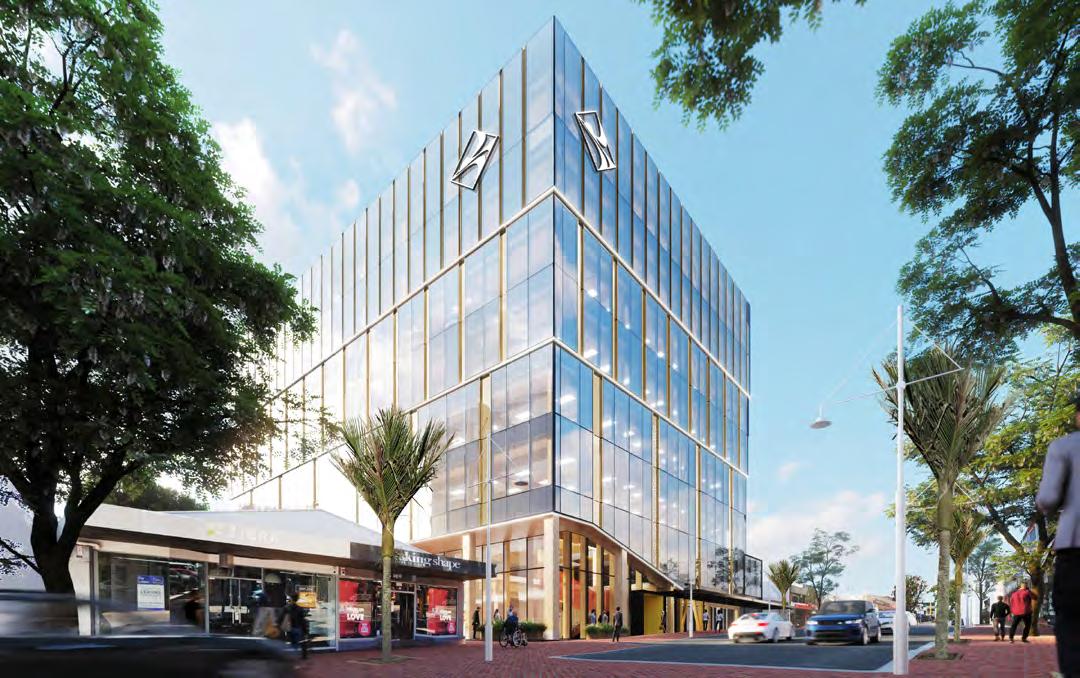
From page 1
building will also feature rainwater harvesting, EV charging and facilities that encourage active transport options. The building is targeting the highest 6 Green Star - Design and As-Built NZv1.0 – Design Review Rating, demonstrating world leadership in sustainability.
Willis Bond Executive Chair Mark McGuinness said the project sets a new precedent for innovative and sustainable building design in New Zealand.
“Our goal is always to keep as much carbon in the ground as possible and to walk with a light footprint,” he said. “What makes this project unique is the scale at which we’ve been able to achieve this.”
Willis Bond have entered into a 12-year Partnering Agreement with the TCC, and the Agreement provides for the company to work with them to deliver real estate solutions on council-owned land in the Tauranga city centre. Willis Bond has worked in collaboration with TCC and mana whenua, includ-
ing representatives from Ngai Tamarāwaho, Ngāti Tapu and Te Materāwaho, to refresh the Tauranga Civic Precinct Masterplan originally adopted in 2018.
Masterplan refreshed
The company said the refreshed Masterplan – Te Manawataki O Te Papa, first approved by the commission in December 2021reflected the evolution of Council’s strategy from 2018 to 2021 and a greater recognition of cultural history and significance of the site to mana whenua. The council has recently also approved the plan, which will see the development of a new Civic Whare (public meeting house), Library, Museum and Exhibition space in Tauranga’s city centre over the next eight years.
Commission Chair Anne Tolley said sustainable outcomes were front of mind when considering a new, purpose-built office space. “We wanted to push the boundaries to design a wholly-sustainable, future-focused
Willis Bond has a 34 year record in property development and investment. The team is responsible for delivering quality mixed-use developments across New Zealand, as well as managing several high value funds. In addition to capital invested for the long term in high quality property assets, Willis Bond has raised more than $500 million in development capital in the past 12 years. Of this, $361 million has been committed to 26 development projects with an end value of $2.3 billion.
In partnership with its consultants and contractors, the company has led a number of award-winning projects including Chews Lane and Clyde Quay Wharf, both of which have won the Property Council, Property Industry Supreme Award. More recently, its Wynyard Central development in Wynyard Quarter won the Sir Ian Athfield Award for Housing at the 2019 New Zealand Architecture Awards along with an Excellence Award at the Property Council, Property Industry Awards.
Created by Green Building Council Australia and adapted for Aotearoa, Green Star is Australasia’s largest voluntary and truly holistic sustainability rating system for buildings, fitouts and communities.
A 4 Green Star rating is the minimum standard that can be certified and is deemed Good Practice. A 5 Green Star rated building is deemed New Zealand Excellence. A 6 Green Star building exemplifies world leadership.
Green Star – Design & As Built NZ is an adaptation of the Australian-developed Green Star – Design & As-Built v1.2 and may be used to certify the design and construction of commercial buildings of any typology.
workplace which maximises the use of natural materials, such as the exposed timber columns which celebrate the uniqueness of the building,” she said.
“Willis Bond and Council staff continue to work with mana whenua to ensure that mātauranga Māori (Māori knowledge systems) principles are incorporated and add to the look and feel of the building.
“This will be our home for at least the duration of the 15-year lease, so it’s important that we get it right and create a facility that both speaks to its Tauranga Moana origins and provides a welcoming and people-friendly space for our staff and the community.”
Tolley said the ability to bring all administration staff together in one building will have significant cost and efficiency benefits, while the long-term lease arrangement means there will be no construction outlay, which will also help the council stay within its required debt limits.
New Zealand’s growing avocado industry will take the spotlight in April 2023 when New Zealand hosts the World Avocado Congress for the first time.
With a global avocado market worth approximately $8 billion (USD) in 2020, and expected to grow to $17billion (USD) by 2025, the World Avocado Congress has become the most prestigious global event to celebrate the avocado sector.
Jen Scoular, chief executive of New Zealand Avocado and President of the World Avocado Congress Committee, said that after the challenges of the global pandemic, New Zealand was delighted to welcome the global avocado community to showcase New Zealand.
“Borders are reopening. Tickets are live on our new website. New Zealand and the avocado sector is open for business and we invite you to join us for the 10th World Avocado Congress in April 2023,” she said.
Taking place from 2-5 April 2023 at the Aotea Centre in Auckland, the World Avocado Congress is anticipated to attract more than 1000 people from 50 countries, including some of the brightest minds in avocados; international growers, researchers, marketers, retailers, tech innovators and investors. “The World Avocado Congress will showcase New Zealand’s leadership in avocado growing, sustainable environmental practice, beautiful orchards, ethical work treatment and great tasting avocados,” said Scoular.
“We’re excited to have the scientific, technical and marketing brains of the global avocado community in NZ, sharing their knowledge, hearing about our industry, and being part of the collective approach seeking to increase both supply and demand of avocados.”
“This is also a once in a lifetime opportunity for New Zealand’s avocado community to access global avocado experts and apply this knowledge to New Zealand’s unique avocado growing conditions and challenges. “
The congress will include a three day academic programme with international keynote speakers. Topics will include sustainability, production and productivity, breeding and genomics, pest and disease management, extension, agritech, post-harvest supply chain, nutrition in human health and international reports. Regional field days will take place prior to the event.
“Conversations remain ongoing regarding sponsorships and event partnerships, so don’t hesitate to get involved,” said Scoular.
To date, Mission Produce – one of the largest avocado growers and marketers in the world – has joined as the first global foundation partner. New Zealand sponsors include Darling Group, Avoco, Radfords Software and Seeka. Event partners include Plant & Food Research, Auckland Unlimited, Tourism New Zealand and Horticulture New Zealand.
In 2019, New Zealand won the bid to host the 10th World Avocado Congress and was up against Mexico, the largest avocado exporter in the world, and Kenya, the sixth largest exporter of avocados globally. Held every four years, previous congresses have been hosted in Colombia, Peru, Australia and Chile.
New Zealand has nearly 5,000ha of avocado orchards and contributes two percent of global avocado production. It is the world’s ninth largest avocado exporter.
Over the past financial year, New Zealand’s avocado industry value increased significantly to $234 million (NZD), with record values achieved in both export and the New Zealand market from 8.2 million trays harvested.
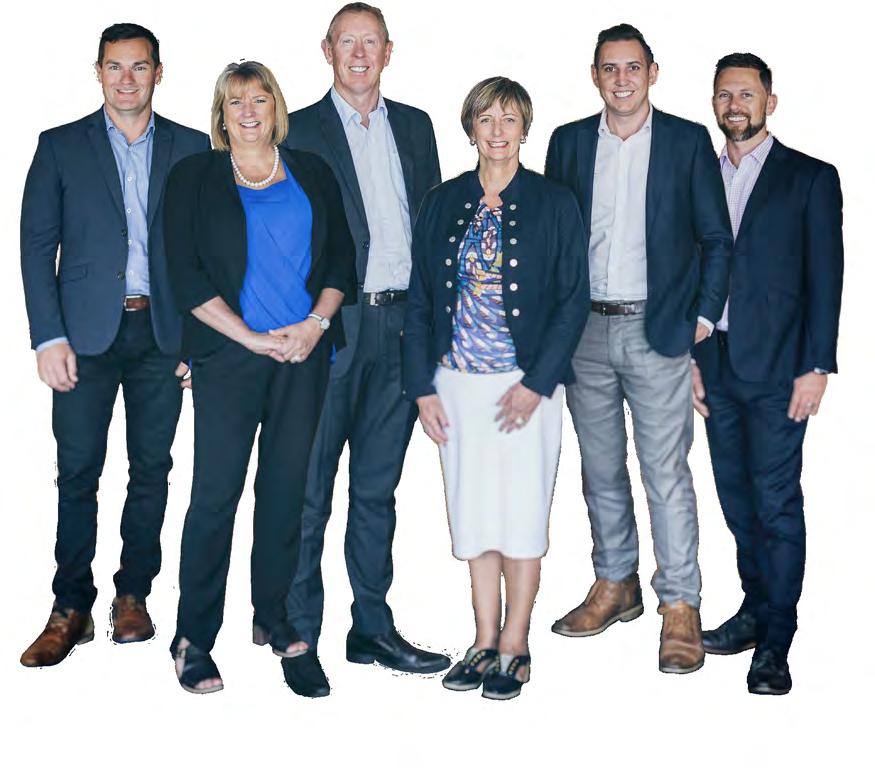
When is a tax invoice not one? From 1 April 2023 when it instead becomes “taxable supply information” under recent changes to the GST legislation.
If you are GST registered, you need to know that the rules that set out the information you need to provide to your customers will change from that date, as will the information you need to hold in order to claim GST on your expenses.
If this is news to you, you are not alone. In a recent survey of attendees at a GST webinar, around half of the attendees responded to a poll question and indicated that they were unaware of these changes.
There have not been any significant changes to the legislation for invoicing and documentation since GST was introduced in 1985, in contrast to the vast improvements to technology and business systems. The current changes to move GST invoicing requirements into the digital era and to have them better reflect current business practices is welcomed and severely overdue.
Under the new rules there is a much greater degree of freedom in the way in which the GST relevant information can

be shared and recorded by the parties. This caters in part for the move towards e-invoicing which does away with the issue of a paper invoice, or even the delivery of an electronic invoice document - hence the need to modernise the tax invoice rules.
Some of the practical changes to the specifics regarding the information required to be shown on invoices (or provided electronically) by the supplier are:
• For supplies under $200, only the name and registration of the supplier, the date of the supply, a description
of the goods and services and the consideration for the supply are required;
• For supplies between $200 and $1,000, the information also needs to include either the amount of GST charges or a statement that the amount includes GST;
• For supplies over $1,000 it is no longer a requirement to show the address of the recipient, other identifying information such as a telephone number, email address or website address are sufficient if the actual address is not available;
• There are also similar

> BY ANDREA SCATCHARD
Andrea Scatchard is a Tax Partner at Deloitte, based in the Bay of Plenty. She can be contacted on ascatchard@deloitte.co.nz
changes to the requirements for debit and credit notes, which now will become known as supply correction information.
Following initial submissions the lawmakers have been mindful to ensure that a business that is issuing a valid GST tax invoice now would not have to make any changes to comply with the new rules, which will be a relief to many businesses. But if you are looking to change your invoicing systems or processes, or perhaps you know that you are not currently compliant, the new framework should be easier to comply with in many respects.
Review your accounts
Even if you make no changes in your invoicing processes after 1 April 2023, you are likely to need to review your accounts payable GST processes. After 1
April 2023, the fact that a supplier’s invoice does not have the words “tax invoice” on it does not mean that it is not a valid document that can form part of the evidence to support your GST claim.
Changes that are in effect now
We have also seen some very common sense changes to other aspects of the tax invoicing rules, and these are in effect now:
You no longer need to retain a tax invoice to support your GST claimed on expenses, but you do need to retain information to show the amount of GST paid on the supplies, and from 1 April 2023 you need to hold the taxable supply information for the supply;
Purchasers of goods and services who issue buyer created tax invoices, rather than
The adoption of Tauranga City Council’s 2021-31 Long-term Plan Amendment and 2022/23 Annual Plan at the end of June puts in place the tools we need to get on with ‘rebuilding’ Tauranga.
By ANNE TOLLEY, Tauranga Commission Chair
Following another extensive community engagement programme, where the Commissioners had direct contact with people, organisations and businesses from throughout our city, some key decisions have been made about our future community facilities infrastructure in the CBD.
Perhaps more importantly though, we now have the funding mechanisms in place to pay for the wider infrastructure investment we so badly need, without putting too much stress on the Council’s debt levels.
To briefly recap, one of the commission’s key priorities
since we were first appointed has been to ensure that Tauranga’s rates burden is fairly shared across the community, because that’s a critical factor in ensuring that future rates are as affordable as possible for everyone.
At the heart of this is the historic decision-making which meant that Tauranga’s business sector paid around 23 percent of our total rates costs, compared to an average of 30 percent in other New Zealand metropolitan centres.
That raised equity issues which couldn’t be ignored and the need for change was reinforced by independent research indicating that about half of the trips on our transport network are business-related, but the sector paid for
just a quarter of transport-related costs.
The solution we settled on was a staged increase in the commercial differential rate over the 2022/23 and 2023/24 financial years from 1:1.6 to 1:2.13, and in the transport targeted rate from 1:1.6 to 1:5. This will mean that by 2024, the commercial and industrial sector will be paying for half of Tauranga’s transport costs and contributing more fairly to our total rates. Here though, we need to acknowledge that the commercial share will still be lower than that applying in most cities.
The Commissioners also want to acknowledge that in the current economic situation, any increase in costs will add to the difficulties many

My improvement project is to improve the advertising and merchandising sales within our Rotorua branch. This consists of improving our inventory, display, street appeal and increase the revenue from walk in customers while avoiding product loss. I have gained so much from the course and find something new to contribute to my team each day while using the principles learnt. Such a benefit to my career. – Emmalee Giddens, Senior Parts Interpreter Terra Cat
businesses are facing. That’s obviously a matter of regret, but the urgency of Tauranga’s infrastructure issues means that there was no choice but to make the hard call on funding fairness now.
The financing proposals
Two other decisions will also impact on how we pay for infrastructure investments.
However, one of those – a decision to proceed with applications to use the Government’s Infrastructure Financing and Funding Act (IFF) to contribute to the cost of Western Bay Transport System Plan projects and the cost of enabling work to accelerate the availability of 2,000 new homes and business devel-
opment in Tauriko West – is dependent on the numbers making sense, once finance proposals are finalised.
The IFF approach means that the Government sources funding for approved projects and the cost of servicing the money borrowed is covered by levies on the properties that benefit from the investment.
This keeps the loans off Council’s books and helps us to stay within our required debt-to-income levels. What’s proposed is that IFF will contribute $200 million to key transport projects, funded by a city-wide levy, because everyone benefits from a more efficient transport network.
The levy cost would be offset by a reduction in the transport targeted rate. Another $60 mil-
receiving tax invoices from the supplier of the goods and services, will welcome the change to no longer require Inland Revenue approval to issue these. They will still need to show that there has been agreement between the parties to use the process.
You no longer need to state “copy only” on a second copy of a tax invoice issued to a customer, and it is no longer a punishable offence to issue two tax invoices for the same supply; Changes to the GST group rules to allow a single member of the GST group to issue tax invoices on behalf of all members.
This is only a small snapshot of the changes to the GST invoicing rules, space does not permit me to cover them all in this article. Please reach out to your accountant or tax adviser to discuss what the changes mean for your business.

lion would go towards Tauriko West enabling works, covered by levies on the properties that benefit from that investment. And finally, to ensure that growth pays for growth, citywide development contributions have also increased by 15 percent, as from 1 July. We greatly appreciate the general willingness of the business sector to contribute more to the investments it will benefit from. Your taking on a fairer share of rates costs will make a significant difference in the city’s ability to address its challenges and ensure Tauranga remains a great place to live, work, learn and play.
At Dale Carnegie, we invigorate your employees by drawing out their natural strengths, building the courage and confidence they need to take command of their role and achieve the unexpected.
• Powerful People Skills – Build authentic relationships with tried and true methods. Create the confidence and the people skills needed to have a real lasting impact within your organisation.
• Inspiring Presenters – Empower your team to wow an audience of any size, deliver their message with conviction and truly own the room.
• Leaders Who Build – A respected leader is an effective leader. Leader’s need the right stills to drive employee engagement by creating more confident,
Dale Carnegie BOP Waikato 07 579 0484
www.bop-waikato.dalecarnegie.com
enthusiastic and empowered employees that drive results.
• More Sales & Amazing Service – Dale Carnegie believe that building strong relationships was the key to success. By better understanding and anticipating a customer’s needs you can grow your business and exceed their expectations.
• Activated Organisations – Engage entire teams and tackle complex challenges with our proven methodology and custom solutions.
The nature of today’s business relies on 24/7 365 days of uptime a year. Uptime and availability of critical resources play an important role in determining the success of an organisation. To ensure business continuity, organisations must overcome unique challenges every day. One of these challenges is downtime.
Downtime is best described as a period in which a system, device, or an application’s core services, both internal and/or external, are unavailable or idle for a certain amount of time due to updates, maintenance, safety precautions, and even unexpected outages. During downtime, a computer system, server, or network is offline or unavailable, and employees are involuntarily unproductive and unable to conduct business or service clients.
How system downtime can impact your business: Many people think of downtime effects as solely revenue-based: “If we are down, then we can’t sell product X.” While this may be true, it is not the only loss suffered. In fact, downtime can have far-reaching effects across many parts of your business that will affect your bottom line in ways you might not have anticipated. It’s important to remember how everything ties into the big-
ger picture. When starting to determine what downtime will cost you, remember to work through:
• Lost sales revenue
• Lost employee productivity due to malfunctioning systems or Internet (think in terms of salaries and benefits)
• Potential employee overtime costs to meet deadlines following a period of disruption
• IT recovery costs
• Cost of restoring IT systems (some data may be forever lost)
• Supply chain ripple effects Where applicable, compliance violations or materials lost
While this list is in no way exhaustive, it starts to show you just how devastating downtime can be. What’s more, there are other, more intangible effects to your business that may be harder to quantify with a dollar amount. These include:
• Customer dissatisfaction
• Low employee morale or turnover due to stress/consequences of downtime Brand/loyalty damagez
Downtime costs
Knowing the cost of downtime will help you evaluate its impact on your business. The following formulas can be used to obtain a ballpark estimate for labor costs and revenue loss per hour of downtime:
Productivity cost =
E x % x C x H
• E = number of employees affected
• % = percentage they are affected
• C = average cost of employees per hour
• H = number of downtime hours
Revenue loss = (GR/TH) x % x H
GR = gross annual revenue
• TH = total annual business hours
• % = percentage impact
• H = hours of downtime


> BY MARIETTE TOLMAY
Mariette Tolmay is the marketing lead at Stratus Blue. She can be contacted at mariette@stratusblue.co.nz.
Downtime is unpredictable and can happen to any organization irrespective of its size.
So how do you prepare for the unexpected? Here are a few tips that you can follow.
1. Develop a business continuity and disaster recovery plan to prepare for unforeseen downtime events.
2. A robust business continuity and disaster recovery solution will ensure your business continuity strategy works.
3. Regularly update and install patches for operat-
ing systems, hardware, and software to ensure the stability and security of your devices.
4. Securely back up your critical data, this will enable you to quickly get back up and start functioning normally even when disaster strikes.
5. Implement a network and device monitoring tool to keep a tab on your devices’ health and performance.
6. Human error is one of the main causes of downtime. However, the frequency of human error can be greatly reduced with regular employee training.
I have written many articles on the importance for potential franchisee entrepreneurs to undertake a thorough due diligence of any particular business or franchise system before entering into a franchise agreement.
We find that most potential purchasers come armed with a number of standard and sensible questions which include; what are the ingoing fees, what are the ongoing royalties or costs and how much money they will make?
Due diligence will involve looking at the financial model of the system, the performance of existing franchises and in many cases the resale of established franchisees and any associated capital gains. For new or greenfield franchises these are of course largely hypothetical exercises and for established, you are looking backwards versus looking forwards. There are however three areas that potential franchisees often fail to fully understand or take into consideration.
Hiding in plain site, these relatively straight forward clauses or terms of any franchisee agreement can have significant impact on the
value created by the franchisee entrepreneur, or what they are able to retain over time, on selling their franchise business. My advice is simple, ensure that you understand
what each is and include this in your evaluation and due diligence.
Most franchise agreements and or most franchise systems have a territory or trading area associated with a franchise agreement. First step is to understand is this territory exclusive or

> BY NATHAN BONNEY
Most outages are predictable to a certain degree, but you can’t plan for everything. That being said, in the end, 51 percent of outages are avoidable. And for the other 49 percent well there are several ways to help you limit their impact and reduce the time they prevent your teams from being productive, or your clients from buying your products. By establishing a proactive approach to help minimize the effects of downtime, you will not only save revenue but provide a positive user experience for your entire business – both your staff and your clients.
Nathan Bonney is a director of Iridium Partners. He can be reached at nathan@iridium.net.nz or 0275-393-022
non-exclusive, i.e. can another franchise agreement or franchisee be granted in the area and or can they trade in that territory.
Or is it a first right of refusal, i.e. that you will be offered any additional trading opportunities before they are offered to anyone else? If it’s the latter, what are the conditions associated with that first right of refusal?
Every franchise system and their associated business model is different, so there is no one-size-fits all in terms of what is best or most appropriate, but it is a key commercial element to understand.
When a franchisee sells their business to a new

franchisee or business owner what are the costs? Who pays, i.e. the exiting or incoming party? Are these a flat fee or a percentage of the sale price. Do these fees change over time depending on what period of time is left on the franchise agreement?
Are there any restraints on when or costs associated with when a franchise business is sold, i.e. that it cannot be sold in the first terms or payment of potential fees?
From our experience, this is probably the most often overlooked of all clauses in franchise agreement and the one that can have not only the biggest impact on the resale value created and retained by a franchisee entrepreneur, but also their ability to sell.
Termination and restraints of trade
My personal and very strong view is that restraint of trade clauses in franchise agreements are completely valid and
reasonable. For an incoming franchisee you want the protection and comfort to know that you will not be competing with an outgoing or former franchisee in the market you are planning to operate in. For franchisor it’s completely valid for them to want to be able to protect the value created by their intellectual property, market development and support of their franchisees both current and in the future.
The consideration for potential franchisee needs to be how will their future plans be affected by restraint of trade clauses, i.e if they have a particular skill or occupation, will purchasing or entering into a franchise prevent them from operating in this area when they exit the franchise?
Again, it’s something to take into consideration both in terms of the value created by the clauses whilst you are in the system and the potential restrictions when you leave.


The pace of events continues to increase and it is very much ‘Back to the Future’. It is exciting to see all the events back in full swing utilising all the various venues at Trustpower Baypark now the restrictions have eased.
Over the next couple of months, Baypark will host Business Events, National and International entertainment, National Sports Events, a variety of Expos and more.
Delegates to the School Business Managers Association 2022 National Conference will be guests at Baypark Wednesday 13 - Friday 15 July. Many intend to extend their stay in Mount Maunganui and Tauranga making the most of the School Holiday break.
Some of the upcoming events: Armageddon – 23 & 24 July
The Tauranga Armageddon Expo is coming back to Trustpower Baypark for two days of celebrity guest panels, gaming, cosplay, comics, collectibles and amusements.
Don’t miss out on virtual celebrity guests, interactive gaming areas, our famous Cosplay Parade and Competition, the Chilli Eating Challenge with a $1000 grand prize, an Artist Alley, comics, geeky merch and more. Experience the incredible with Armageddon. Follow the Armageddon Expo Facebook, Twitter and Instagram for updates.
Australasia’s largest action sports festival will take place at Baypark. Thousands are expected to gather, with some of the biggest sporting legends from around the world set to compete. You do not want to miss this one.
X*AIR 2022 in the Arena is set to return alongside the Valvoline D1NZ National Drifting Championships Grand Finale in the Stadium. The Festival features Skate, BMX, scooter, and BLINDSPOTT in the stadium lounge for the after-party Saturday night.
Don’t miss this exciting event with X-Air in the Arena at the same time as D1NZ is thrilling the crowds in the stadium.
Book a corporate box for the twoday event – watch the action in style. Make enquiries direct to event@bayvenues.co.nz for information on hospitality and availability.

Battle in the Bay – 6 August
Battle in the Bay 2022 Cheer Champi onships. Watch the amazing talents of some of the best Cheerleaders across the country as they come together to compete at Trustpower Arena. Cheer leading is one of the fastest-growing sports in New Zealand.
Tauranga Careers & Business Expo – 12 & 13 August
Thousands of students, job seekers and those looking to upskill or change career are expected to descend on Trustpower Arena for the Tauranga Careers & Business Expo in 2022.
The annual Tauranga Canvas Careers Expo aims to give people the opportunity to explore their options. Hosted annually by Priority One and Tauranga Rotary, the free two-day expo features interactive displays and representatives from across New Zealand, ready to engage and help students and adults alike plan their career pathways.
The Tauranga Food Show – 27 & 28 August
The Seriously Good Food Show is now the Tauranga Food Show! Why? Because they are local, they are passionate about bringing New Zealand’s best food to the Bay of Plenty, and they are getting a little less serious! Explore everything from chocolate, cheese and chutney to tea, truffles and tabasco, with plenty for everyone including allergy friendly, vegan or vegetarian, gluten free and organic options. See cuisine come to live in the Live Cooking Kitchen featuring our favourite chefs from restaurants and cafes around the Bay and enjoy lunch with food truck flavours and street food delights. Enjoy the biggest foodie weekend in Tauranga on the 27–28 August at Trustpower Arena Baypark.
Zespri Aims Games – 3–9 September
The Zespri AIMS Games is a strategic

Bay of Plenty and the Tauranga City Council.
The Zespri AIMS Games is a Tauranga City Council Legacy event. All individual and team sports are superbly organised to a very high standard.
Linked to various local sporting clubs, Regional and National Sporting Organisations to achieve this. The sporting championships give 11-13 year olds an opportunity to compete as an individual or in a team against their age group in 23 different sports. Each of the sports offered in 2022 will be hosted in superb facilities.
The Women’s Lifestyle Expo –17 & 18 September
The Women’s Lifestyle Expo is a twoday event for women of all ages, and the only event of its kind happening in six regions in 2022 – Christchurch, Hamilton, Wellington, Palmerston North, Tauranga and New Plymouth. Each event features 100 to 200 exhibitors showcasing everything from fashion and beauty to health and fitness, artisan products and crafts, gourmet food and beverages and much more!
The majority of expos feature interactive areas including a Nail Pamper Zone, Hair Styling Lounge, Beauty Pamper Lounge and Makeup Lounge. Plus, the popular Taste Zone, Artisan Craft Zone, Fashion Zone and Goodie Bags available for purchase.


Baby Expo – 24 & 25 September
Discover all you need to know for you, your pregnancy or young child. Gain expert, up-to-date advice from our diverse range of exhibitors and experiment with products and services to find what best suits your needs.
A Complimentary Creche, Parents Room and Mothers Room are provided onsite to ensure you have everything you need to visit in comfort. A huge range of products and services will be on show, along with seminars, demos and workshops. Exclusive offers, activities and competitions are also provided – this expo is not to be missed!
The 2022 National Congress is being held live in Mt Maunganui from 1st to 8th October 2022. The 36th New Zealand National Bridge Congress is the premier bridge event in their annual calendar. An estimated 700+ players with supporters will attend. The event is great for the city as the attendees will be out about with accommodation, hospitality, retails and leisure activities all benefiting by the event.
Demi Lee – 7 October
Demi Lee was first introduced to the South African Audience in 2014 when she reached the top seven on Season 10 of Idols. She went on to be the First winner of the television show “Die Kontrak”. This is where
her road to massive success in the music industry was paved.
Her latest album “Jy Ken My Naam”, was released in late 2020 and has reached Golden status across South Africa. Demi Lee attracted the attention of “Die Konviewers with her and Monique Steyn’s’ interpretation of American Singer Cam’s . They received compliments on social media from the singer herself upon the release.
According to Demi Lee she has the greatest privilege in the world to share a stage with the love of her life, Barthlo and having Arnold Coleske as her mentor.
Come see Demi Lee Moore & Band Live in Concert Aotearoa! HoopNation – 21-24 October
The HoopNation journey first started in 2011 at Baypark. The Classic has grown to become New Zealand’s premier basketball event showcasing some of the nation’s top basketball talent. Hosted annually every Labour Weekend in Tauranga, New Zealand. This year there will be 11 youth divisions and 5 adult divisions over 4 days.
Tauranga’s Premier Venue
Trustpower Baypark is Tauranga’s Premier Venue for conferences, meetings, entertainment, and exhibitions. Offering a complete package in one convenient location that features state of the art meeting rooms, in-house catering, audio visual services, marketing/promotional services.
Britain’s Premier Comedian Jimmy Carr is coming to Baypark Thursday 26 January 2023. Pre-sale from 23-26 June, and general tickets on sale from Monday 27 June from Ticketek.
This year and the next two or three may present a lot of challenges to business owners. Depending on the industry you are in, you may be already feeling the decrease in turnover as customers are being a lot more cautious with their money.

> BY VALERIE ROWE-MITCHELL
Accounting and other money matters with Valerie Rowe-Mitchell, owner of Emerald Business Advisers. Valerie can be reached on 07 579 5777 or valerie@emeraldbusiness.co.nz
his brings us to a very interesting position, because yes, we need to pay tax and the ongoing tax such as GST and PAYE will need to be paid no matter what, but your Income Tax obligation can potentially shrink quite significantly compared to the previous year.
In the next month, August 2022, your accountant will issue you with a Provisional Tax notice. The Provisional tax is a regime of prepaying your Income tax for the year ahead. Let me demonstrate it in the example: Ben and Co Limited had taxable income of $100,000 for the year ended 31 March 2022. The Income tax on this amount is $28,000, which is payable to the IRD. The 2023 Provisional tax amount will be calculated as $28,000 plus 5 percent, this is called standard uplift and the idea behind it is that IRD expects you to do better each year by about 5 percent. Therefore, the Provisional tax for this business will be $28,000 + 5 percent= $29,400.
The Provisional tax payments are made to the IRD in three instalments and on the specific dates being 28 August, 15 January and 7 May. So, in our example we have total provisional tax to pay of $29,400. This amount will be split into three instalments and therefore the accountant will notify Ben and Co Limited to pay $9,800 on 28 August 2022, and $9,800 on 15 January 2023 and $9,800 on 7 May 2023. All makes sense, BUT…
What if you are not making the same amount of money this

year and your profit is down due to economic changes in the country or changes in your industry or perhaps you have not got employees to fulfill the positions and therefore your turnover and profit is nowhere near the last year’s results?
Get in touch with IRD
If this is the case for you, and you do receive a provisional tax notice from your accountant, I would suggest getting in touch with them and letting them know that the things are not going as well as last year and that you want to recalculate your provisional tax payments based on the business performance in the first four months of the year and also let your accountant know your expectation of what may be happening with the business for the rest of the year.
So how can business survive a recession and an economic downturn?
The three main areas that are extremely important during tough times are:
1. Meticulous management of business costs. You need to know what metrics to watch and what the numbers are actually telling you.
2. Management of your time. You have 24 hours each day, everyone gets the same allocation, if you use these 24 hours to your advantage it always translates into excellence.
3. Excellent Customer Service, which will bring repeating business and referrals.
I wish you all the best and if you have any questions please flick me an email: valerie@ emeraldbusiness.co.nz

In July 2020, I wrote an article for this publication entitled “Do the due (diligence, that is)”.* Referencing a New Zealand High Court case, the article highlighted the importance of undertaking comprehensive due diligence when buying a business.

wo years later, I am revisiting the topic of due diligence because of two matters that I recently learned of.
The first matter involved due diligence in the purchase of a business; the second matter involved due diligence in the expansion of a business. Both matters are good examples of why doing the due is important, and, more specifically, why when doing the due it can be very important to seek advice from an IP attorney.
(Before I continue, I should say that to preserve confidentiality, I have kept the descriptions of the two scenarios intentionally broad.)
Turning to the first matter, the background facts were these. Business A had purchased the assets of Business B. All was going fine until Business A tried to enforce its IP rights and was met with an ownership challenge.
On reviewing the relevant documents, it transpired that Business A did not in fact own the rights it thought it did – it only owned a third of the rights; the other two thirds were still owned by Business B.
This news came as a complete and unwelcome surprise to Business A as, not being
the exclusive owner of the IP rights in play, it could not enforce them.
This situation could have been avoided if, when doing the due, advice on the IP rights being offered had been sought from a specialist IP attorney.
Fortunately, the ownership issue was ultimately resolved but not without a degree of unnecessary frustration (and expense) incurred by Business A.
In the second matter, Business C was an online business that began trading in Australia a number of years ago. About a year ago, it started trading in New Zealand, albeit on a small scale.
Unfortunately for Business C, it did not own the rights in its name in New Zealand – Business D did, and Business D did not like Business C selling into New Zealand as Business C was selling competing goods.
On becoming aware of Business C, Business D’s lawyers sent a letter of demand to Business C, telling it to stop infringing Business D’s trade mark rights in New Zealand.
This letter came as a complete and unwelcome surprise to Business C, as not being
the owner of its name in New Zealand meant it could not use it in New Zealand.
This situation, too, could have been avoided if, when doing the due on its name (i.e. when choosing its name) Business C had instructed an IP attorney to check all the jurisdictions it had aspirations to trade in in the future for users (and registrants) of identical or similar trade marks.
At the very least, Business C could have instructed an IP lawyer to check for other users of its name in New Zealand before it began trading in New Zealand.

As it is, Business C has had to stop trading in New Zealand until it either changes the name of its whole business or it has set up a new website under a different name to trade in New Zealand.
I hope the two examples in this article demonstrate to readers just how important it is not only to do the due, but to do the due properly – which, when IP rights are involved, means seeking advice from a specialist IP attorney.
* If you haven’t read it, fear not, you still can here: https:// bopbusinessnews.co.nz/ intellectual-property-issues/ do-the-due-diligence-that-is/
You never think it will happen to you. Until it does. The painful truth is: You are more likely to be the victim of cheating now than at any other time in history. But no matter how repulsed it makes you feel, you’re entitled to know the truth.
Once, they chased you. But now, you’re just a forgotten conquest, and it hurts. Don’t you deserve to feel special? Appreciated? Valued? After all, you’ve been loyal over the years. Once upon a time, they put you on a pedestal and made you feel loved.
These days, things are more…transactionary. It feels like they’re just going through the motions. They tell you nothing’s changed, but you suspect they’re faking it.
Where Did The Spark Go?
Now, they’re picking up other people behind your back. Charming and entertaining them. Spending time with them. And even worse…spending money on them.
Time, attention and money that should be spent on you
Think about it: What did they give you for your birthday? Perhaps an email or a gift voucher…if you’re lucky. Yet they tell you they value you. No matter how badly they treat you – no matter how many times you say, “I’m leaving” – you’ll be back soon enough. You know it, and they know it. Until they ghost you again, and the adulterous cycle repeats itself once more.

> BY FREDDIE BENNETT
Guinness World Record Holder, podcast host and bestselling author, Freddie is known as ‘The Profit Hunter’. He helps business owners enjoy more time, money and freedom by discovering and extracting hidden profits in their companies. Freddie@conqueryourmedia.com
Would you tolerate this treatment in a romantic encounter? I hope not. So why do you tolerate it in a business relationship?
Any business owner will say, “We love our customers,” which is a strange thing to say, considering how often they cheat on them.
At the start of a customer relationship, it’s all so new and exciting. Promises are made, breathless emails and phone calls are exchanged. “Tell me what you want”, the business says.
“I’m tempted…show me what you’ve got”, the customer replies.
But after the customer gave a satisfied sigh and opened their…wallet, things go cold. Phone calls are left unan-
swered. Promises are broken.
The business owner is already trying to close their next conquest.
Most companies are hypnotised by the glitz and glamour of the short-term fling. Leads, sales, subscriber counts, followers and likes: The exciting stuff that you think about in the shower as a guilty pleasure… when your customer is patiently waiting for you to call.
Very few businesses will do faithful, repetitive, loyal activities for their customers. And hardly any will do it with real passion.
But if they ignore their customers, they’re playing with fire. If they play with fire, they burn their bridges.
A recent article in Forbes highlights that almost 70% of
Ascience-based Jobs for Nature-funded project recently launched at Te Waiiti Marae at Lake Rotoiti in the Bay of Plenty. It is a crucial step in the fight to protect some of New Zealand’s bestknown native plants.
The ‘Myrtle Rust Jobs for Resistance’ programme – Te Rātā Whakamaru is a Scion-led project funded by the Department of Conservation – Te Papa Atawhai, which is being delivered in partnership with Rotoiti 15 Trust. The project will allow for the development of knowledge in myrtle rust, working with and for mana whenua in the Bay of Plenty. The programme will have eight full-time equivalent staff working for the next three years in Bay of Plenty forests and science laboratories. They will be monitoring the spread of myrtle rust disease, report-
ing on tree health and identifying if any trees are resistant to the disease.
Arapeta Tahana from Rotoiti 15 Trust says he and his fellow trustees are committed to providing opportunities for the taiao, culture and people.
“This is logical for us to invest in our own people. To increase capacity for learning for our whenua (land) while protecting our ngahere (forests). This is not the sort of work you can outsource,” Tahana says.
“The goal is to provide jobs and build capability within the Bay of Plenty to protect the ngahere (forest) against myrtle rust,” he explains. “We are committed to not only understanding the impact of myrtle rust within our environment, but to connect and understand our environment better.”
Scion Kāuru co-leader,
Mariana Te Rangi told the new work team that many of the things New Zealanders enjoy could disappear if the disease spreads out of control.
“No more manuka honey, no more pōhutukawa along our coastline - and no more feijoas.
These species may die out in our lifetime if we do not find ways to protect them,” she says. “The mahi is more important than the forests you are working in – you are working on something that all New Zealanders care about,” she explained.
Te Rātā Whakamaru is unique. Its science focus means that the team will not just be working in the forests, they will also work in Scion’s plant health laboratories. As part of their job, they will be upskilled in several areas of forest biosecurity science.
This partnership is also
customers will switch to a competitor that provides the best experience. After how they’ve been treated, you can’t blame them for seeking someone who can give them more bang for their buck.
I’m a business owner. I get it: ‘Delight and retain your customers’ isn’t exactly breaking news. But we’re also under pressure. The pandemic, staffing shortages, and supply chain disruptions continue to put strain on delivering excellent customer experience.
“Please excuse our poor performance. We’re doing the best we can”, we plead.
Not the words of a swaggering, confident, business that sets hearts alight, is it?
In terms of customer engagement, it’s as passionate




as sitting in the waiting room of a sexual health clinic. But redemption is not only possible, it can also be very rewarding.
To rekindle that loving feeling, smart companies need to focus on engaging their existing customers. Instead of ignoring them as soon as a hot new prospect walks past.
This doesn’t have to be complicated, resource-intensive or expensive. You don’t need a fancy social media campaign or TV ads
There’s a wealth of opportunity sitting in that customer database. Your current and past customers are just waiting for you to reach out.
I’ve worked with businesses where we pull in six figures cash faster than a shotgun wedding, simply by asking present customers if they would like to buy some more.
But – like in so many rela-

tionships – knowing the right thing to do is easy. Actually doing it is a different matter.
The Way Things Used To Be
It’s never too late to save a relationship. You can make them feel alive once more.
Pick up the phone, write them a personal email or even a letter (yes, really). You know what they like and how they like it, so put it on a plate for them. You might be surprised at what happens next. And you might never have to look elsewhere again.
So next time you’re tempted to cheat on a customer, stop and think about the consequences. Don’t risk that hard-won trust for a moment of madness. Look deep into the heart of your customer relationship and remind yourself…
“It’s not you. It’s me.”
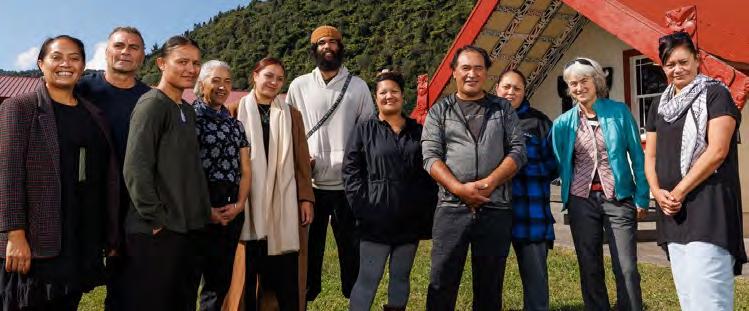
part of the nationwide ‘Jobs for Nature’ $1.129 billion programme led by the Department of Conservation and the Ministry for the Environment to revitalise communities through nature-based employment. Its primary focus is to support businesses to provide employment as the economic impacts of Covid-19 continue to unfold while ensuring environmental benefits.
Myrtle rust arrived in New Zealand in 2017 and has been spreading quickly. It is a particularly damaging fungal disease that can attack more than 30 native species in New Zealand.
Pōhutukawa, as well as rātā, manuka, kanuka, ramarama together with feijoa and Eucalyptus are all susceptible to the disease. Death of mature ramarama trees has been recently observed in the East Cape and the disease is escalating in the Bay of Plenty.
Myrtle rust is a wind-borne disease and is impossible to contain.
Scion scientist Heidi Dungey says while this work will not prevent infections, it will help with understanding of when and where the most susceptible myrtle species are within the region and provide ways to support them.
“We can also identify the most resistant trees and work out what helps them stay healthier while others around them may succumb to the disease,” she explained.
Rotorua-based Scion undertakes research for the benefit of New Zealand’s forests. The organisation has significant expertise in the identification of myrtle rust, how it interacts with trees and developing tools to stop its spread. Scion will use its specialist skills to train the group in myrtle rust surveillance, seed collection, setting up and monitoring trials to find as many trees as possible with disease resistance.
Architect Mark Wassung, Richard Drummond
MD KiwiBus Tauriko West and Max Lewis, have combined to create a mode of transport which will reinforce the city’s commitment to endorsing and promoting decarbonisation.
The 23 seat electric shuttle bus is an innovative transformative approach to transport which will revolutionise the way Tauranga citizens move around the city. It will be a fast,
frequent and nimble, smaller, lighter vehicle which will do less damage to roads and kerbs. Futuristic looking, bold and brightly coloured, combined with highly accessible open plan design, will afford every person the opportunity to both explore and reach their destinations.
The smaller bus will be far more economical in the ability to access suburban areas, encouraging cyclists, people in wheelchairs, parents
with prams and even mobility scooters to change their mode of transport. The addition of CCTV cameras and high impact acrylic screens to protect both the driver and passengers will enhance safety, reduce vandalism, making this option of transport highly desirable. This progressive concept will promote local manufacture and business, allowing Tauranga to become a leader in innovative thinking.
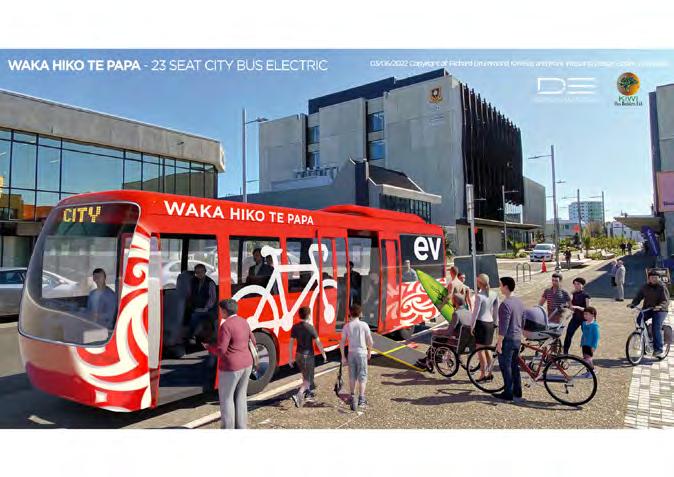

> BY CRAIG HUDSON Craig Hudson is Xero’s managing director for New Zealand and the Pacific Islands.
he word inflation is everywhere. It’s all over the news and making its way into casual conversations with our colleagues, friends and family.
Wage inflation, raw material cost increases and higher debt interest rates are all impacting small businesses and many are finding it difficult to absorb. Inflated costs will mean many businesses decide between investing for the future of the business or gritting teeth and getting through the now.
It’s a hard decision to make, and there’s no right answer, but we have to be prepared for the outcome.
I believe the best way we can manage this tricky period is through leveraging real-time data to ensure your business is putting its resources in the right spots.
The sooner a business can understand the impacts rising prices or staff shortages are having on their operations, the better it can counteract and respond.
These are the questions you should be asking yourself: what’s happening within my customer base? Who are my loyal customers and why? What are my supply chain risks?
If you’re struggling to answer these questions, it’s a great time to look into what digital tools could help your business. The Government’s Digital Boost website has a wealth of information and is a good place to start. Our data clearly shows digitalised businesses are more productive,

and fared better through the pandemic.
If you’re trying to put a finger in the air and guess based on gut, unfortunately, it’s going to make these tough times even harder.
Has inflation already started?
Real data from Xero Small Business Insights show small businesses in the Bay of Plenty are doing well right now.
The region has seen strong growth in sales and steady growth in wages in 2022, a reassuring sign of local businesses responding to the current economic challenges they face.
Small businesses sales are up 10.6 percent year-on-year in May this year, the strongest of all regions across Aotearoa. Small business wage growth is up 5.8 percent year-on-year, tied with Waikato and Hawkes Bay.
Despite this, job growth was relatively flat. So, while those employed in the Bay of Plenty are enjoying decent sales and wage growth at the
moment, there appear to be fewer employment opportunities in the region.
While things are looking good now, it’s very likely inflation will begin to have a more significant impact on the Bay of Plenty soon.
The increasing cost of living means locals are likely to tighten their purse strings and reduce discretionary spending. Big and small businesses alike will be more controlled with their spending too.
Small business owners will have to manage the balancing act between growing wage demands and the increasing costs of keeping the business running. A key way to combat this will be having oversight on cash flow, tracking incomings and outgoings, and staying on top of outstanding invoices.
As we enter these challenging times, businesses and individuals need to prioritise supporting local. It’s so important to pay your invoices on time and shop locally when you can. This will help fight inflation by keeping money circulating through the Bay of Plenty small business economy.
the first to receive a FREE copy of our

The Waikato Management School (WMS) at the University of Waikato’s Tauranga campus was humming with aspiring leaders last week as more than 40 Year 13 students from 10 Bay of Plenty secondary schools came together to partake in the first face-toface hub day for the WMS Leadership Academy.
WMS launched the academy as a pilot in term one with high school students across Bay of Plenty and Waikato regions. The programme is designed for ambitious, self-motivated students, supporting them to become stronger leaders who are better equipped to make a positive difference in their school, future careers and communities.
Anchal Sharma from Whakatane High School joined the programme because she wanted to grow as a leader. The deputy head girl, prefect and community advocate says she wants to use the skills to help reach her dream of becoming a surgeon.
“The messages I’ve learned so far are unique and I’ll take this with me through life. I’m mindful of what it takes to become a leader, and what type of leader people want to follow,” she says.
Throughout the programme, students benefit from world-class leadership concepts and training and also complete the WMS flagship first-year paper, Introduction to Leadership Communication which means they will have one credit if they go to university.
Anchal, who is also enrolled in Lifespan Development and Writing for Aca-
demic Success at the University, encouraged students who get the opportunity to be part of the Leadership Academy to “take it”.
“Even if you have the smallest interest in leadership, this programme opens up your mind to new concepts that you can use in many ways.”
Thursday’s event, led by WMS Distinguished Alumni Jamie Fitzgerald, was packed with inspiring talks, leadership coaching and networking, as well as interactive sessions which brought to life the leadership theory students learned in their tutorials.
Jamie is CEO of the consultancy business, Inspiring Performance and an avid adventurer who has walked unaided to the South Pole and holds the world record for rowing across the Atlantic Ocean.
Mikaere Smith, Head of Future Pathways; Māori and Pasifika Mentor at Aquinas College, told students to enjoy the opportunity.
“You’ve put in a lot of hard work and you’re on the next transitional stage of your life. Thanks to the university for showcasing this talent.”
Meanwhile, Katikati College Year 12 Dean, Graeme Vallely wished the initiative was around when his children went to school.
“Seeing students go

through this journey; the outcomes and the rewards, are fantastic.”
Another student was using their final year of high school to get a head start on university.
Jacques Van Rinsvelt, prefect of Tauranga Boys’ College is enrolled in Economics for Business and Management, Introduction to New Zealand Law and Society, Critical Thinking, and the Leadership Academy paper.
“My school did a good job of showing there were no limitations, so I thought I’d go for it and prepare myself for university as much as possible.”
WMS Pro Vice-Chancellor Matt Bolger says WMS, ranked number one in New Zealand for business and economics, focuses on empowering people to grow thriving businesses in a thriving society, in a thriving world.
“It may be cliche but these students are going to be our leaders in the future, and we want to empower them to grow so they can make an even bigger impact in the world,” Matt says.
The Waikato Hub Day was held last week at the Hamilton campus. Cohorts from both hub days will come together in Hamilton for a Summit in August for the conclusion of the programme.

Amie Hickland (Te Aitanga-a-Hauiti and Ngāti Kahungunu) has spent more than a decade in communications and journalism both in Aotearoa and Australia, and joins The Shine Collective after relocating to the Bay of Plenty from Wellington.
After starting her career at Wairarapa’s daily newspaper – and training with one of the legends of journalism – she’s built her knowledge and expertise working for a range of private and public organisations.
A journalist by trade, Amie loves to sink her teeth into a good story. She’s a strategic thinker and has a knack for tying communications needs together seamlessly.

With New Zealand’s annual inflation hovering around 7 percent – the highest it’s been in three decades and well outside the Reserve Bank’s target of 1-3 percent – how is the rising cost of everything impacting lease structures in the office sector?
Steve Rendall, Bayleys’ national director office leasing, says tenants and landlords have become acutely aware of potential risk resulting from rapidly increasing inflation, and the effect it can have on real rental return.
“Most leases have rent review capacity built-in – typically either market based, where valuers assess the rent against market benchmarks, or fixed increases to an agreed percentage figure.
“The prevailing mechanism for prime office spaces has to-date been fixed growth of around 2.5-3.0 percent per annum with market rent reviews at lease renewal or midterm, usually with some form of ratchet.
“These fixed growth rent structures have provided certainty to tenants and landlords, and allowed them to factor increases into forecasts and operating models.”
The rising cost of debt
The rising cost of debt, generationally high inflation levels and pandemic-related supply chain and construction/fitout challenges have started to bite, creating a structural
change in the way leases are shaped.
“The problem is that fixed rent reviews across a longer-term can lead to property being under-rented, which is obviously undesirable for landlords, so rent review mechanisms have become an area of heightened negotiation as a consequence,” says Rendall.
“Landlords – and their lenders – will generally want rent review mechanisms that provide a degree of hedging against high-inflation and high-interest rates, while tenants generally seek the opposite to avoid a big jump in rents.
“Over the last six months, there’s been a preference shift by landlords towards CPI-linked – plus a margin –rent reviews, or heightened levels of fixed growth which, understandably, has caused some angst for tenants.”
Rendall says the best way for Bayleys’ leasing and advisory teams to assist tenants and landlords is by showing them where the market is at.
“As a full-service agency, Bayleys has coverage and exposure across all property sectors, giving us insight and context. We can show our clients where the market is – and therefore what a reasonable lease structure is given market dynamics
and competing influences at play.”
Rendall says knowledge is empowering, and Bayleys’ full service offering enables the business to share real time data, ensuring tenants and landlords are better placed when negotiating a new lease.
Chris Farhi, head of Bayleys’ insights and data team says the Auckland and Wellington CBD office markets are currently experiencing reasonably stable rents, but with variance across sub-markets.
“Demand remains strong and rentals have been rising in the premium market, but in the secondary/ lower quality markets where demand has been softer, rent changes have been more subdued.
“On top of Covid, the recent high inflation situation has created uncertainty in the office sector and while the prime market will likely accept the pre-set rent reviews, the secondary market may look for opportunities to loosen up on rent review clauses.”
Farhi analysed rental data over the past six years under three scenarios from the same starting rent: fixed annual growth at 3.0 percent per annum; inflation indexed based on CPI + 0.5% per annum; and Auck-
land CBD prime office benchmark rent for reference (where annual market rent reviews would be unusual).
“We found the fixed growth scenario would have achieved a higher overall rent than the CPI-indexed scenario and it would likely take a further 12-24 months of heightened inflation to balance things to similar outcomes.
“Now it’s a new ball game, given the spike in inflation only kicked in from September 2021.”
Farhi says in the premium/prime office market where vacancies are lower, landlords are seeking rent review mechanisms that will hedge inflation better, but tenants are acutely aware of the historic norms.
“The prime market is currently tending to revert to fixed growth mechanisms, although the growth rates are typically landing at the upper end of the spectrum.
“In the secondary market however, higher levels of vacancy swing in the tenants’ favour and in some extreme cases where the vacancy rate of certain buildings is abnormally high, tenants are often seeking that rent reviews be waived or deferred, or looking for incentives to renew.”

Port of Tauranga today announced it is the new naming rights sponsor of the Port of Tauranga Rescue Centre which will serve as a hub for surf lifesaving operations in the eastern region.
The new centre is close to completion at Golf Road, Mount Maunganui and has the capability to act as a rescue coordination point for any major beach and surf rescues undertaken by Surf Life Saving Eastern Region, which comprises 19 surf clubs from Hot Water Beach
Gisborne.

The building will also accommodate clubrooms, offices and storage space for Mount Maunganui Bridge Club, Surf Life Saving New Zealand and Omanu Beach Surf Life Saving Club. The Bridge Club has had clubrooms on the site since the 1970s.
Port of Tauranga Chief Executive, Leonard Sampson, says the Company is delighted to announce the partnership.
“The Port of Tauranga Rescue Centre will provide a purpose-built, well-equipped base for the many volunteers and staff that do an extraordinary job in keeping people safe on the beach and in the water,” he says.
“The Port of Tauranga Rescue Centre will be there to support these first responders whenever they need to act in an emergency or coordinate a large-scale search and rescue.
“Port of Tauranga is deeply connected to the wider Bay of Plenty region and this is a very tangible way for us to support the communities living on its coast. We look forward to a long and enduring relationship with the community organisations that will call the Port of Tauranga Rescue Centre home.”
Donal Boyle, Trustee of the Omanu Beach Charitable Trust, says the support of Port of Tauranga is a game-changer for surf lifesaving in the region.
“It means that we can get on with saving lives and supporting our many volunteers, without worrying about the ongoing costs of running the centre. The backing of Port of Tauranga, such an iconic company in this region and nationally, is very much appreciated by our community,” he says.
The Port of Tauranga Rescue Centre will be officially opened in the next few months and will be fully operational in time for the 2022/2023 summer season.
The Port of Tauranga Rescue Centre is being developed by the Omanu Beach Charitable Trust on Tauranga City Council-owned land in Golf Road, Mount Maunganui, Tauranga.
The 1,300 sqm regional rescue centre will be occupied by: Surf Life Saving New Zealand national and regional staff, and Omanu Beach Surf Life Saving Club and Mount Maunganui Bridge Club.
The facility will be used for:
• Offices and training space for up to 50 surf lifesaving staff and volunteers
• Storing critical rescue equipment including IRBs and jet skis
• A communications/emergency coordination centre for major ocean or beach rescues in the region
• Storage for Omanu Beach Surf Life Saving Club
• Clubrooms, competition venue and training centre for the bridge club
• Meetings and functions.
Construction of the Port of Tauranga Rescue Centre was funded by the Kanoa Regional Economic Development & Investment Fund administered by the Ministry of Business, Innovation and Employment with additional funding from TECT, along with the generosity of local suppliers and supporters.
Talent ID’s 15th Birthday Celebration – Bar Zazu, Millennium Hotel, Rotorua
Photography: Tracey Scott
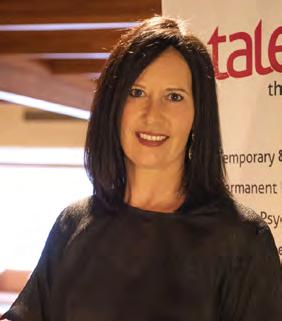
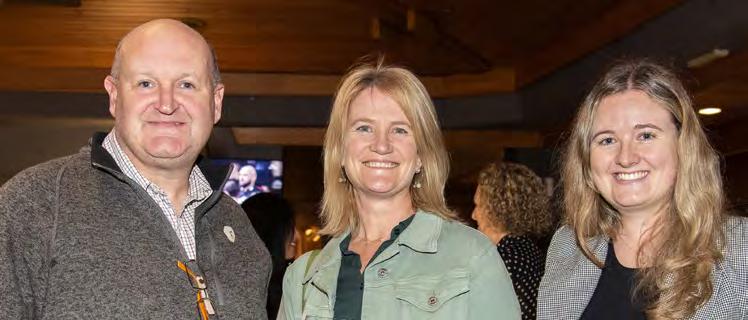
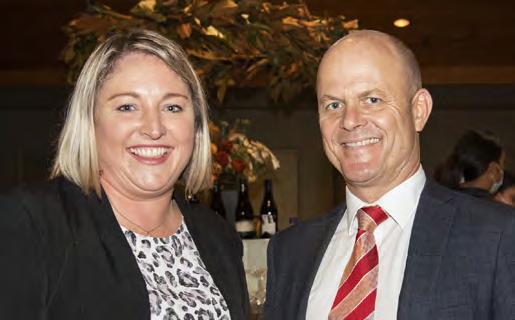
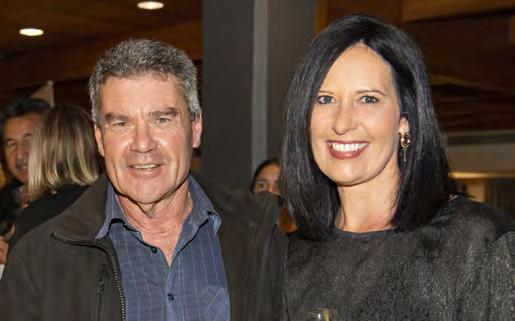
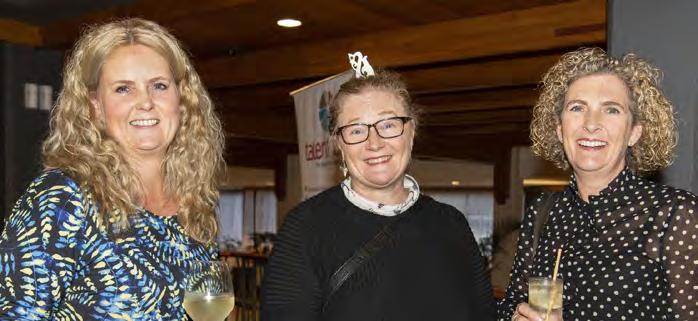

1 4 7 8 9 2 3 10
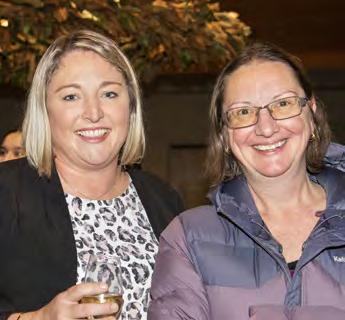
6

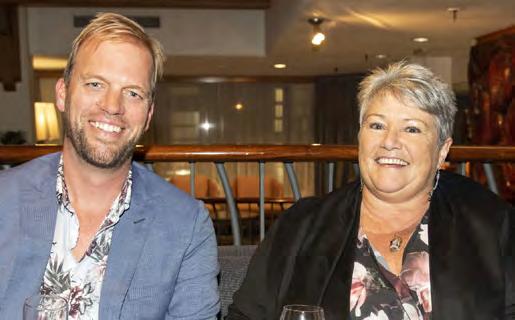


> BY ALAN NEBEN
Alan Neben is a Mount Maunganui local and experienced New Zealand Publisher. He is a fierce critic of unnecessary, time-wasting, inefficient bureaucracy. . alan@bopbusinessnews.co.nz
illing out the form started easily – First name, middle name, surname –well easy for me, but for the guy behind me in the queue, a recently arrived new Kiwi from China, I suspected the form would immediately cause some problems.
I mean, not every culture works by the first name, middle name, surname protocol. Case in point, has anyone ever looked up Singh in the Punjab telephone directory? Most of you will probably answer ‘no’ to that question, but trust me, the directory has a formidable ‘S’ section.
But here’s the thing: The boffins who design the forms are often coders, not designers. The required data fields are all included in the form (along with 27 additional unnecessary pieces of personal information that have exactly nil relevance to the process at hand), so yes, the coder has done his or her job. But for the end-users, the form often doesn’t work and can be prone to elicit worrying levels of swearing from my office.
There’s the form that, despite scrupulous attention on the victim’s part, continues to return an, “all required fields
must be completed,” message. despite the fact you’ve completed ‘all the required fields’.
Required fields
Ok this is a small thing, but always concerning: “Zip code” and/or “State” fields – I come from the land down under, and although we do more often than not enjoy Vegemite sandwiches here, we don’t have a state or a Zip code – which is why I always feel uneasily anxious when submitting my purchase form, sent from the state of BOP, that my online purchase will never arrive; Despite me having paid, I worry my purchase will forever be lost in the ether of “statelessness” somewhere in the back aisles of DHL’s Kuiper Belt depot.
There never seems to be an “other” option for state – it forces me to make up a state –why?: Because it’s a “required field”, of course.
Ok #ihateonlineforms gripe number three: choose your address from the drop-down list. So easy when your address does appear in the list – saves so much typing time and the postcode is probably correct – but, OMG, what to do when
your address is not on the list?
I recently offered to pay my daughter’s car registration online – she’s just shifted house and it was by way of a house-warming gift – weird I know! Her new home is a newly built unit on a subdivided section.
Was her new address included in Waka Kotahi’s drop-down list of addresses: NO. Was there an option ‘address not on the list, please specify’, NO.
Where is her registration card being sent? To her neighbour’s mailbox of course … probably (scary face emoji!) … maybe (praying hands emoji!). It was only $112, and you can’t really expect a small government department like Waka Kotahi’s website to make that easy.
I mean even the ‘big guns’ of the government’s form filling battalion don’t always get it right. Take for example the departure and entry forms you’re required to complete at the airport, or onboard the returning flight. They’ve got it right in terms of form size –one DLE card. Nice.
But my full name is relatively “medium” in length, and yet I still have to write in 3pt

type (condensed), and that’s just my name.
When it comes to Port and Country of departure, try fitting the following answers in the box: Lubumbashi, Democratic Republic of the Congo, or, Kingstown Park, Saint Vincent and the Grenadines.
No wonder it’s so easy to forget you have an apple in your bag when you’ve had to work so hard on reducing your handwriting to microscopic proportions.
Here’s my suggestion: When your data collection team submit the new on-line or hard copy version of the organisations re-designed customer form for approval, do the following:
1. Delete the three most unnecessary data fields (we
don’t really need to know their mother’s maiden name or town of birth).
2. Triple the size of the three smallest info boxes.
3. Halve the size of the two biggest (Mr, Mrs, Ms doesn’t need an entire line).
4. Actually, scrap point 3, let’s not even bother with the Mr/Mrs/Ms – I thought we were supposed to be gender neutral?
5. Where the original Silicon Valley coder has put “State” and marked it “required field”, get our coder to do something smart and eliminate that required field if “New Zealand” is chosen for the Country drop-down.
6. Okay, you need a timeout for security reasons, but please make it longer than
30 seconds, and offer an intermittent ‘save’ function occasionally in the process, because I don’t know anyone who enjoys filling out an online form three times due to time-outs. But it’s not all brickbats –let’s finish with bouquets.
Three cheers for the person who decided to tell the customer “up front”, when they sit down to embark on the journey of ultimate despair that is online form filling, what information they will need at the ready before they start – you good thing.
And for the IRD person whose idea it was to introduce the SAVE DRAFT button on myIR GST return form – I vote you for Commissioner of Inland Revenue. Good form.

It’s long been said that the people in your business are your greatest asset, and it seems that nothing is truer or more reflective of our current employment market.
As employers do we need to change our mindset around our staff? Are our employees actually our VIP customers?
These times are unprecedented. We are seeing a 3.2 percent unemployment rate, and 61 percent of employers looking to increase their permanent staffing numbers. 91 percent of employers are experiencing skill shortages.
There are two things at the forefront of most employers’ minds at present – the shortage of staff and how to retain the ones that they have.
And on our employee’s minds? A “full value” exchange. Recognition of worth, the scope to choose how they work, investment in skill development and purpose. People want to work for companies that have purpose
which aligns with their own personal values – the ‘do some good’ ethos.
Unprecedented times
Unprecedented times required unprecedented thinking. Three years into the pandemic and businesses are really feeling the pressure. In a candidate-driven market, we have seen a lot of movement between roles. It’s been a great time for employees consider a change in employment.
Fewer applicants mean that there is less competition for roles, the prospect of more money and benefits has had people on the move. The demand is high and supply low, creating the prefect storm of sorts for salaries to really increase.
A recent Strategic Pay seminar I attended indicated that 73% of their surveyed employers have had to increase employee packages in response to staff turnover.
A recent market report shows that an uncompetitive salary as being one of the most motivating factors for job seekers to start searching job sites, and that large percentage of employees expecting a pay increase this year of three percent or more.
But can we simply reply on increasing wages to retain people?
We know that people are driven by more than just money, we can’t simply keep increasing salaries – it’s not a sustainable retention strategy. There has to be more – now is the time to be designing your long term employer value

proposition (EVP).
> BY KELLIE HAMLETT
Talent ID are Recruitment Specialists and can support you through your recruitment process. Please feel free to talk to us about this by calling 07 349 1081 or emailing kellie@talentid.co.nz
Businesses are trying to grow, meet production orders, keep up with demand, the pressure is huge, people are working increasingly long hours to keep up with demand, people are getting sick, burnout is high. Stress levels are high.
Despite these challenges, business optimism appears to be high despite access to talent being scarce. The opening of the borders are unlikely to help – at least not in the short term. We are needing creativity when it comes to how we reward staff – coming back to that full value exchange.
It’s a very holistic view and employees are wanting much
more than a good salary and flexible working hours now. Retention payments, on-boarding payments, increases to annual leave, health and wellbeing programmes. Training, development and career progression, and again purpose.
So, it’s about working with what we have. We have seen huge change and transformation over the past two years within our working environment. We are working smarter with less. Re-designing systems and processes, embracing digital transformation, reshaping organisations, positions and responsibilities.
As an HR professional, it’s both challenging and exciting
times – never before have we been pushed and challenged so much to think outside the square, blue sky thinking about what the future of the employment relationship could look like.
As I read in one recent report – Diversity beyond gender and culture – it’s diversity of discipline and thinking. I think there are a few key words which are going to define the next year or so and they are LEARN, DEVELOP and UPSKILL – those are the tools we have to invest in our workforce. They may well be our saving grace, along with a well-designed EVP and retention strategy for your staff.

The Northern Quarter is architecturally-designed to be an inner-city haven; a place to work happily and cohesively in an environment sheltered from the noise and pollution of the outside world.
Positioned between Harington Street and Hamilton Street with an entrance via The Strand , this new eco-building is placed in an ideal, central location in Tauranga CBD.


